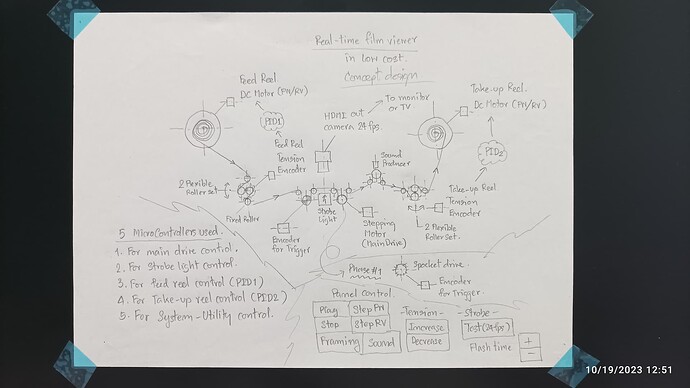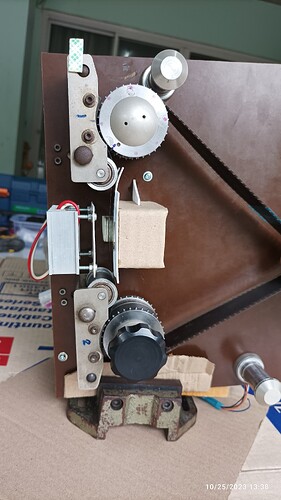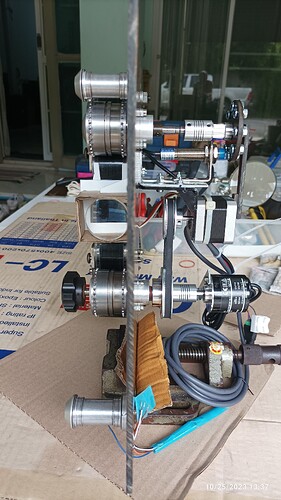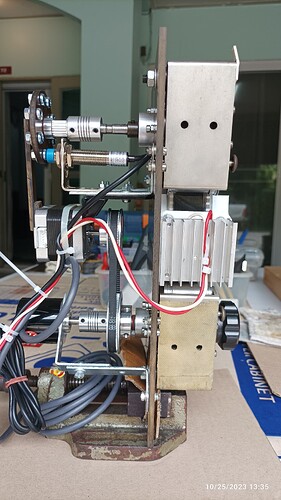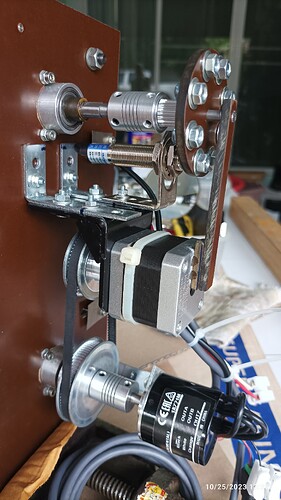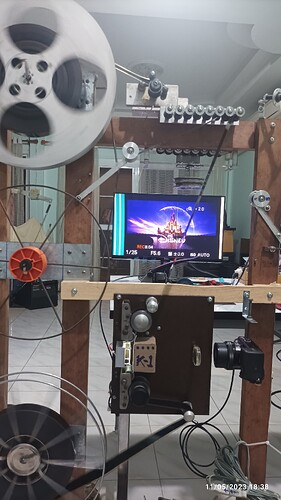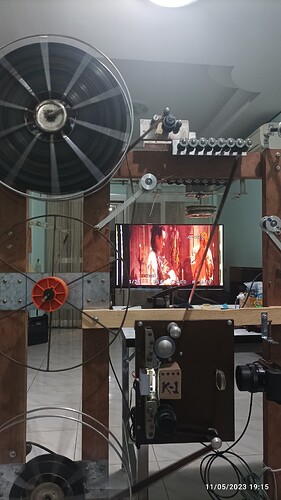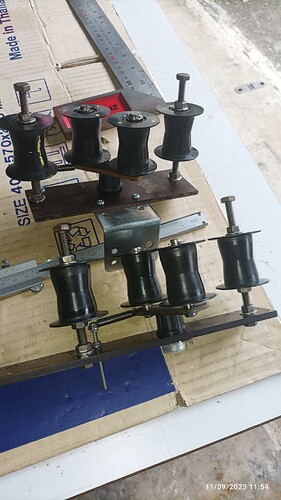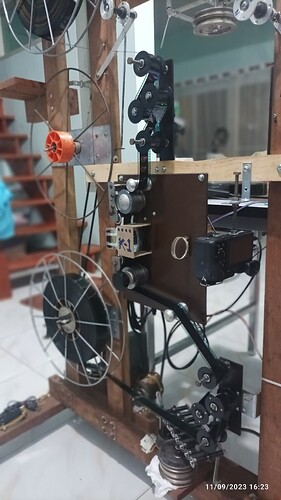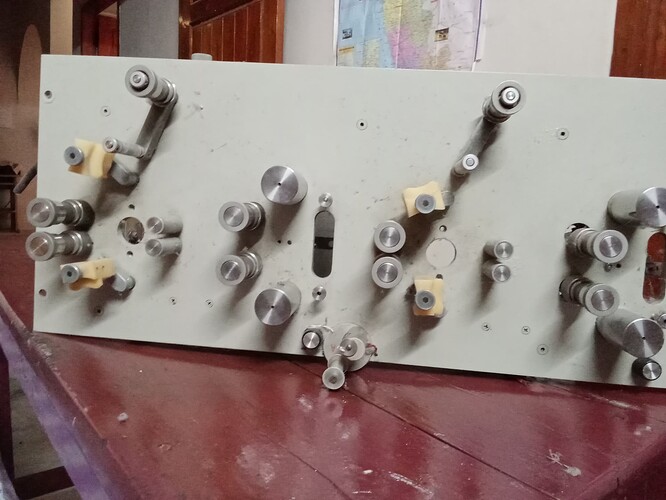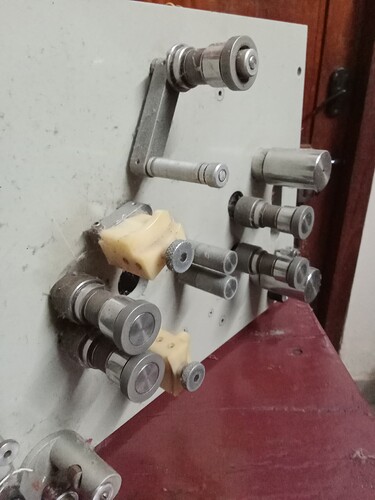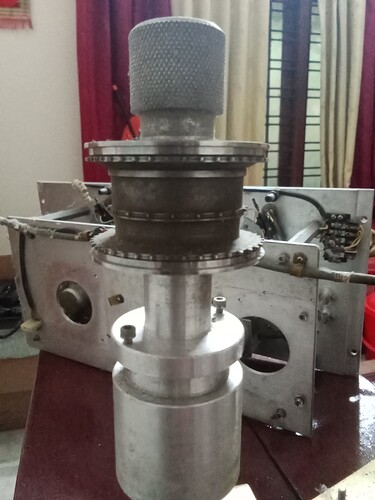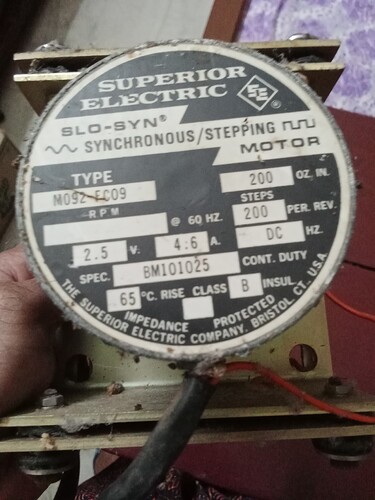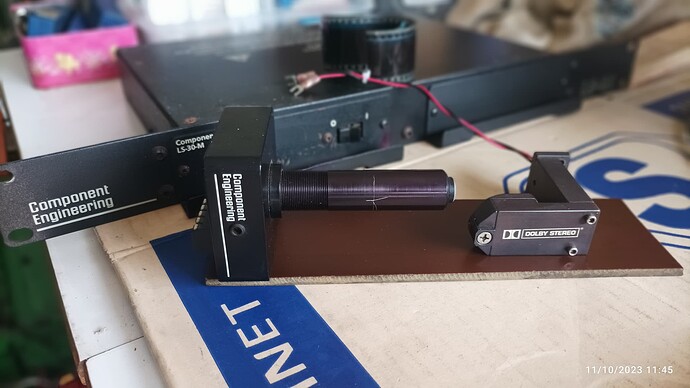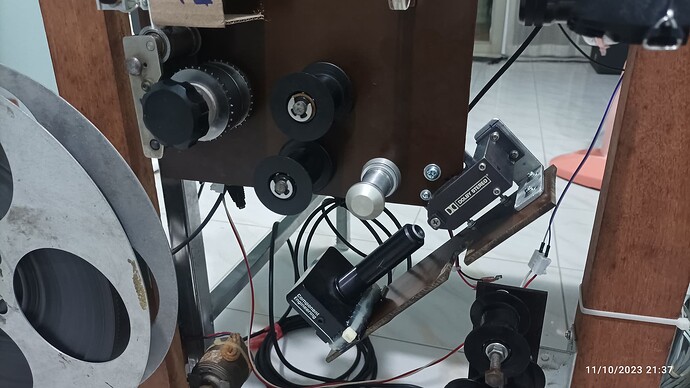I try to build a 35 mm. Real-time film viewer. This is the first step and the result will be used to decide to continue or cancel.
https://www.youtube.com/watch?v=C5EdUUj7ulM
Any idea please. ![]()
![]()
![]()
The purpose of my project : this machine is real-time viewer(picture & sound) and no need any computer connect to. Only plug a display monitor and play.
Concept of machine.(My idea)
//------ Phase#1
A: Producing the picture:
- Create the moving picture by using strobe light synchronize to film speed at 24fps.
- The film path use a sprocket drive so I will install the encoder to the end of the shaft.
- The sprocket speed control by a Stepping motor and run at constant speed 24fps by default.
- The playing speed can be changed to other but not more than maximum of sensitivity of digital input of microcontroller.
- The duration of strobe light per frame can be adjusted between 10-30 micro-second per frame depend on LED type.
- To trig the strobe, I use the output from calculation function of incoming encoder signal. I use 200 pulse per revolution. encoder. The sprocket have 8 frames per revolution so by calculation I will get 8 times to trig the strobe at 25, 50, 75, 100, 125, 150, 175 and 200 pulse.
- Framing, by using this method I can do framing by decreasing or increasing a bit of pulse at ending of revolution by temporary at calculation function.
- The expectation : The frame should be stabled in accuracy. A little bit of motion blur can be accepted.
B: Capturing the video:
- This is difficult for me. I have to find the camera that can synchronize to film speed at 24fps.
- The camera can select the shutter speed normally should more than 1/24s.
- The camera can select the exposure by manual or automatic.
- The camera can select the ISO by manual or automatic.
**** If impossible to capture the real-time video without flicker this project will be cancel !!!! ****
C: Producing the sound:
Option1 >
- I will use a deep red led(690nm) for light source.
- Use the solar cell to produce the signal from light source.
- And use pre-amplifier to increase the gain.
Option2 >
- Using a CAT.702 and DA20 to reproduce the sound. This method I can have 5.1 Dolby sound.
- The expectation : Machine can play sound according to picture.
//------ Other improvement:
- The camera can be changed to machine vision camera and need a high performance PC computer. So we can develop the software by using SDK to control the system and need special list programmer(not like me) for color and data function. The machine will be change from real-time viewer to telecine by using frame by frame grabber.
- Trigger from microcontroller(cal. by using signal from follower encoder) send to camera and camera send back strobe control to system then capture an image. May be system need a grabber card for high performance.
- If we want to run at 24fps we have to select high performance camera and PC, very high cost …(I think)
Framing concept test.
https://youtu.be/8KJ7foJEifw
![]()
![]()
![]()
//------ Phase#2
A: Sprocketless:
- Remove the sprocket and install the Silicone Rubber(I think) drive roller in stead.
- Install a follower roller. It has a encoder installed at the end of shaft for trig the strobe light.
B: Film path tension control:
- Install the 2 set of tension sensor. They have 4 rollers, 2 rollers fixed one for input one for output and 2 rollers flexible in one set. At the end of flexible set have a tension spring and a encoder installed.
- It has 2 DC motors install at the end of feed reel and take-up reel.
- The tension of film path will be controlled by PID from microcontroller. The SP come from sample of position of 2 rollers flexible set, the PV come from encoder and output to drive DC motor. PID for feed reel moving in opposite position for feed reel and PID for take-up reel will moving same direction of take-up reel.
You’ve built quite the machine! Thanks for sharing. Keep us updated with your progress.
Finished for picture reproducer. A little bit updated.
https://youtu.be/daF3kprmaKo
Next step, The Film path tension control.
![]()
![]()
![]()
Nice machine
I think you are an expert with old film technology as l can see Kodak LAD !
Can you please share me some more details as l am on the way to build a 35 mm scanner with some sprockets , torque motors, etc from used film equipments.
Thanks
Thank you sir, I’m not an expert with old film tech. But I can share with you what I did.
Thanks for your reply.
I am having similar rollers, sprockets,stepper motors etc.They are from an abandoned Magnatech sound recorder,in which 35 mm film with magnetic coating was used for recording audio.Feed and take up are with 110 V AC torque motors.Only one sprocket is there and it is driven by a stepper motor but the electronics is missing.
I am not good with programming micro controllers, but I can do with electronics and mechanical.
Hope , with your help on the details of micro controllers,motors used,power supplies etc. I can complete the project.
I am sharing some photos of what I have and the mechanical side is almost same as your build
Ok sir, first thing you have to know. My project is build the 35mm real-time film viewer not scanner or telecine machine. So my machine will not to much an accuracy. I help you understand my point. If you have an electronics background, may be you can start with trigger sensor and strobe light. Please check your sprocket. How many frame per 1 revolution. And can you design the strobe light circuit?
I would be very cautious about running film through that transport. We own (and use) a Magnatech dubber for audio capture. I’ve used them for 30 years. These are not gentle machines. In fact, they’re pretty brutal. They were designed to work with brand new 16mm and 35mm magnetic stock, not archival material. If you’re only working with new film, it might be ok, but you’ll want to remove things like the flat rollers (connected to flywheels on the back side, I think) since those could scratch your film.
If it were me (and it once was - I was going to turn one of these into a scanner once) I would remove all the sprocket wheels and go with a sprocketless setup, to be honest.
This is a good comment. Thank you sir.
